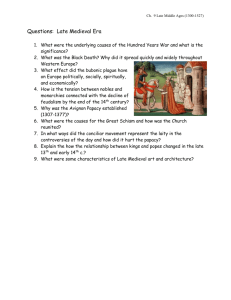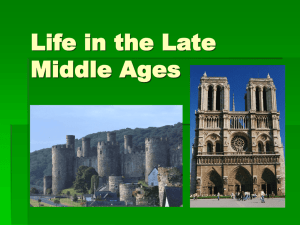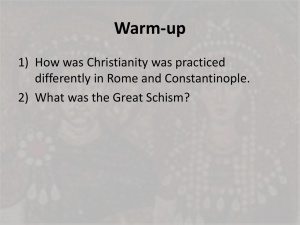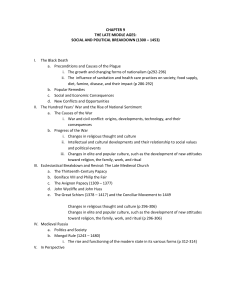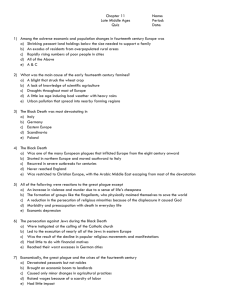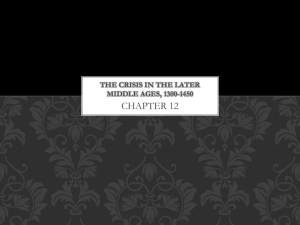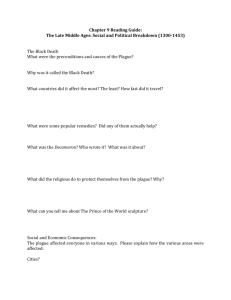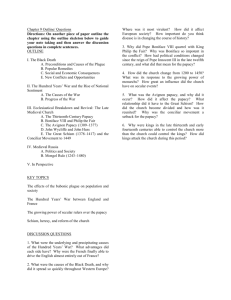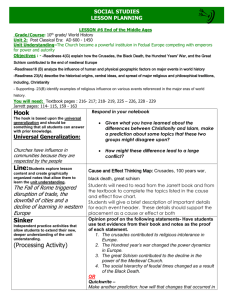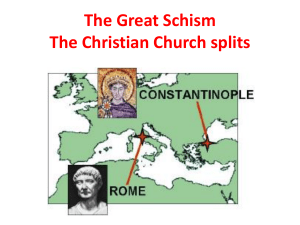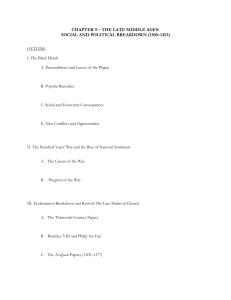Study Guide
advertisement
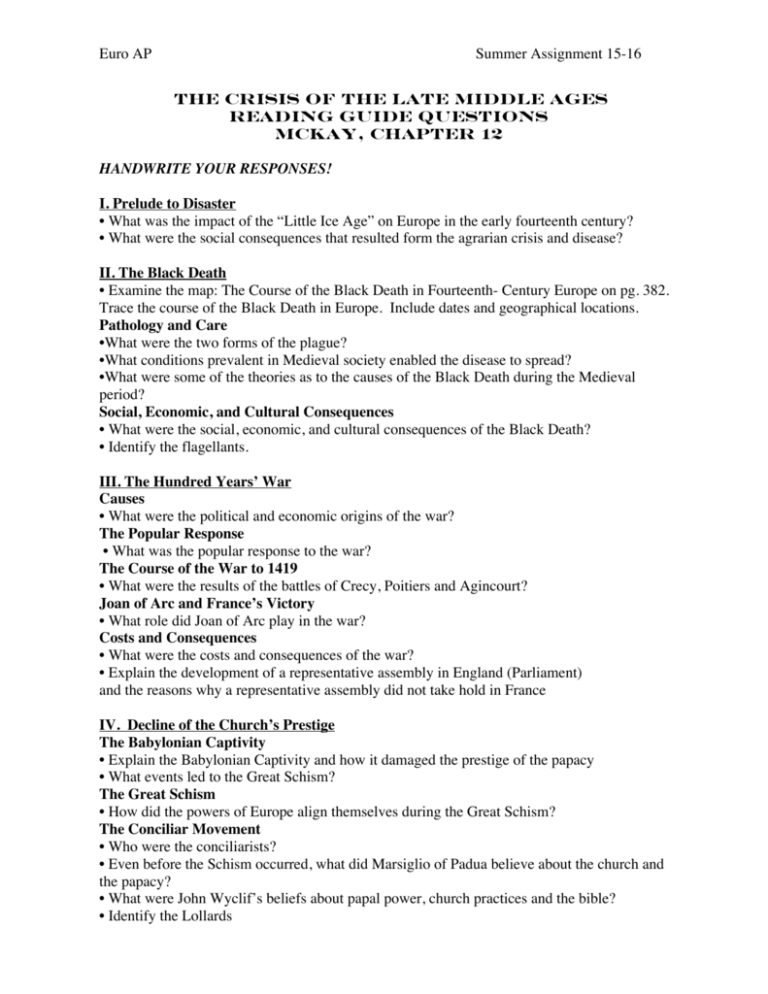
Euro AP Summer Assignment 15-16 The Crisis of the Late Middle Ages Reading Guide Questions McKay, Chapter 12 HANDWRITE YOUR RESPONSES! I. Prelude to Disaster • What was the impact of the “Little Ice Age” on Europe in the early fourteenth century? • What were the social consequences that resulted form the agrarian crisis and disease? II. The Black Death • Examine the map: The Course of the Black Death in Fourteenth- Century Europe on pg. 382. Trace the course of the Black Death in Europe. Include dates and geographical locations. Pathology and Care •What were the two forms of the plague? •What conditions prevalent in Medieval society enabled the disease to spread? •What were some of the theories as to the causes of the Black Death during the Medieval period? Social, Economic, and Cultural Consequences • What were the social, economic, and cultural consequences of the Black Death? • Identify the flagellants. III. The Hundred Years’ War Causes • What were the political and economic origins of the war? The Popular Response • What was the popular response to the war? The Course of the War to 1419 • What were the results of the battles of Crecy, Poitiers and Agincourt? Joan of Arc and France’s Victory • What role did Joan of Arc play in the war? Costs and Consequences • What were the costs and consequences of the war? • Explain the development of a representative assembly in England (Parliament) and the reasons why a representative assembly did not take hold in France IV. Decline of the Church’s Prestige The Babylonian Captivity • Explain the Babylonian Captivity and how it damaged the prestige of the papacy • What events led to the Great Schism? The Great Schism • How did the powers of Europe align themselves during the Great Schism? The Conciliar Movement • Who were the conciliarists? • Even before the Schism occurred, what did Marsiglio of Padua believe about the church and the papacy? • What were John Wyclif’s beliefs about papal power, church practices and the bible? • Identify the Lollards Euro AP Summer Assignment 15-16 • What was the purpose of the Council of Constance? • Who was Jan Hus? (also pg. 397) V. The Life of the People Marriage • Explain marriage patterns of the late Middle Ages. • Identify merchet, banns • Who were John and Margaret Paston? Life in the Parish • What was the role of the guild in the community? Fur-Collar Crime • What types of crimes does Fur Collar crime refer to? Peasant Revolts • The Jacquerie • Peasant Revolt in England 1381 Race and Ethnicity on the Frontiers • In the fourteenth century regulations, laws and customs discriminating among different ethnic groups on the basis of “blood descent” became more common. Explain how these laws separated: Germans from Slavs in Eastern Europe Irish from English in Ireland VI. Vernacular Literature • Dante’s Divine Comedy • Chaucer’s Canterbury Tales • Francois Villon’s Grand Testament • Christine De Pisan’s works (also pgs. 410-411) • Explain the rise of literacy rates in the fourteenth century Summary (Read as review)
